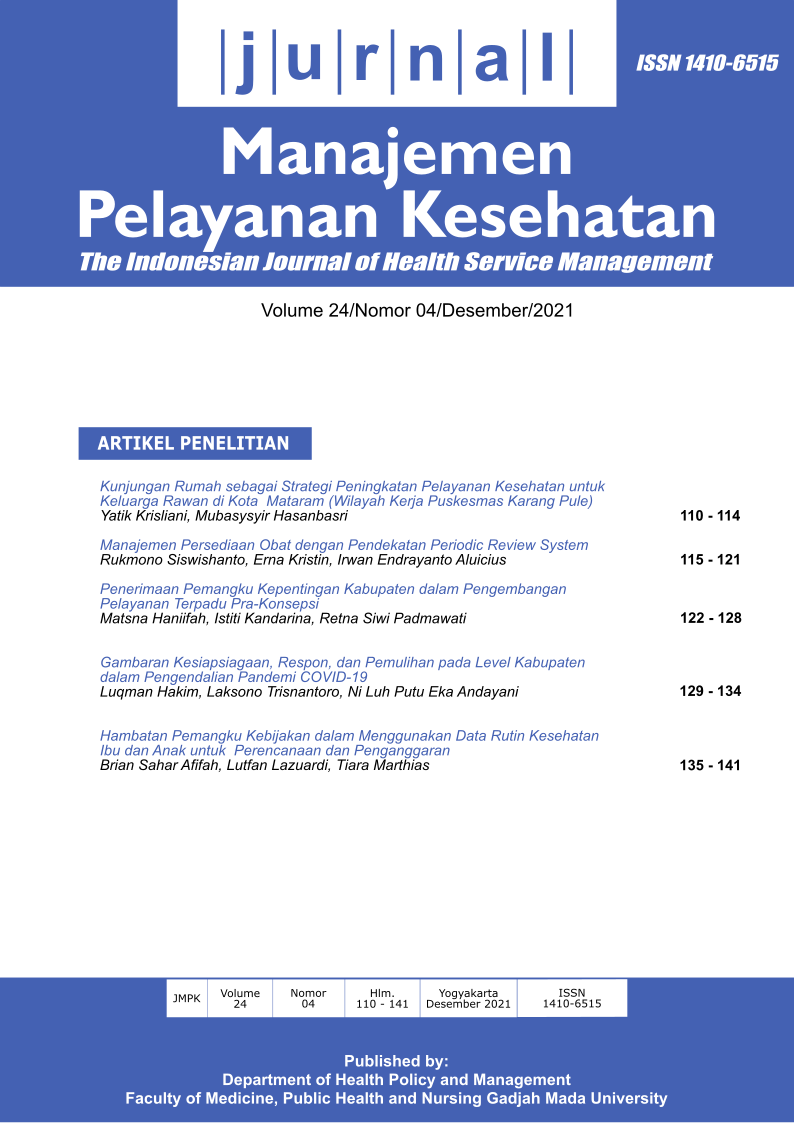GAMBARAN KESIAPSIAGAAN, RESPON, DAN PEMULIHAN PADA LEVEL KABUPATEN DALAM PENGENDALIAN PANDEMI COVID-19
OVERVIEW OF PREPAREDNESS, RESPONSE, AND RECOVERY AT DISTRICT LEVEL IN CONTROLLING THE COVID-19 PANDEMIC
Abstract
Background: WHO has designated COVID-19 as a World Public Health Emergency. Success of the district level in handling COVID-19 is determined by the efforts made in these 3 phases: preparedness, response, and recovery. Sleman which has an urban character has its own vulnerabilitie and resources in the COVID-19 pandemic situation.
Objective: This study aimed to obtain an overview of the preparedness, response, and recovery in controlling COVID-19.
Methods: Qualitative research with a case study design in Sleman using the WHO Practical Actions in Cities to Strength Preparedness Checklist for the COVID-19 Pandemic and Beyond. The research subjects are informants who play a role in Task Force. Data were collected by means of documentation studies, observation, and in-depth interviews. Data validation was done by triangulation of sources and research data.
Results: Expert academics and communities are less involved. At the beginning of the pandemic, risk communication was less than optimal to form stakeholder awareness in the government and the community, resulting in poor public compliance with health protocols and public health measures. Mobility restrictions follow national directives. However, compliance monitoring and enforcement of violations are weak. Testing and tracing capacity is still far below the standard. The strategy to increase the capacity of COVID-19 beds in hospitals does not anticipate a surge in cases, and the formation of village shelters has not been maximized.
Conclusion: Planning and coordination require improvement by
taking into account existing vulnerabilities and involving all resources in the community. Risk communication strategies need to be strengthened according to changing situations and tailored to
specific targets using effective media. The government needs to make adjustments to public health measures carefully, taking into
account the epidemiological situation, the capacity of the health system, and the socioeconomic conditions of the community.
Copyright (c) 2022 Luqman Hakim, Laksono Trisnantoro, Ni Luh Putu Eka Putri Andayani

This work is licensed under a Creative Commons Attribution-NonCommercial-ShareAlike 4.0 International License.




